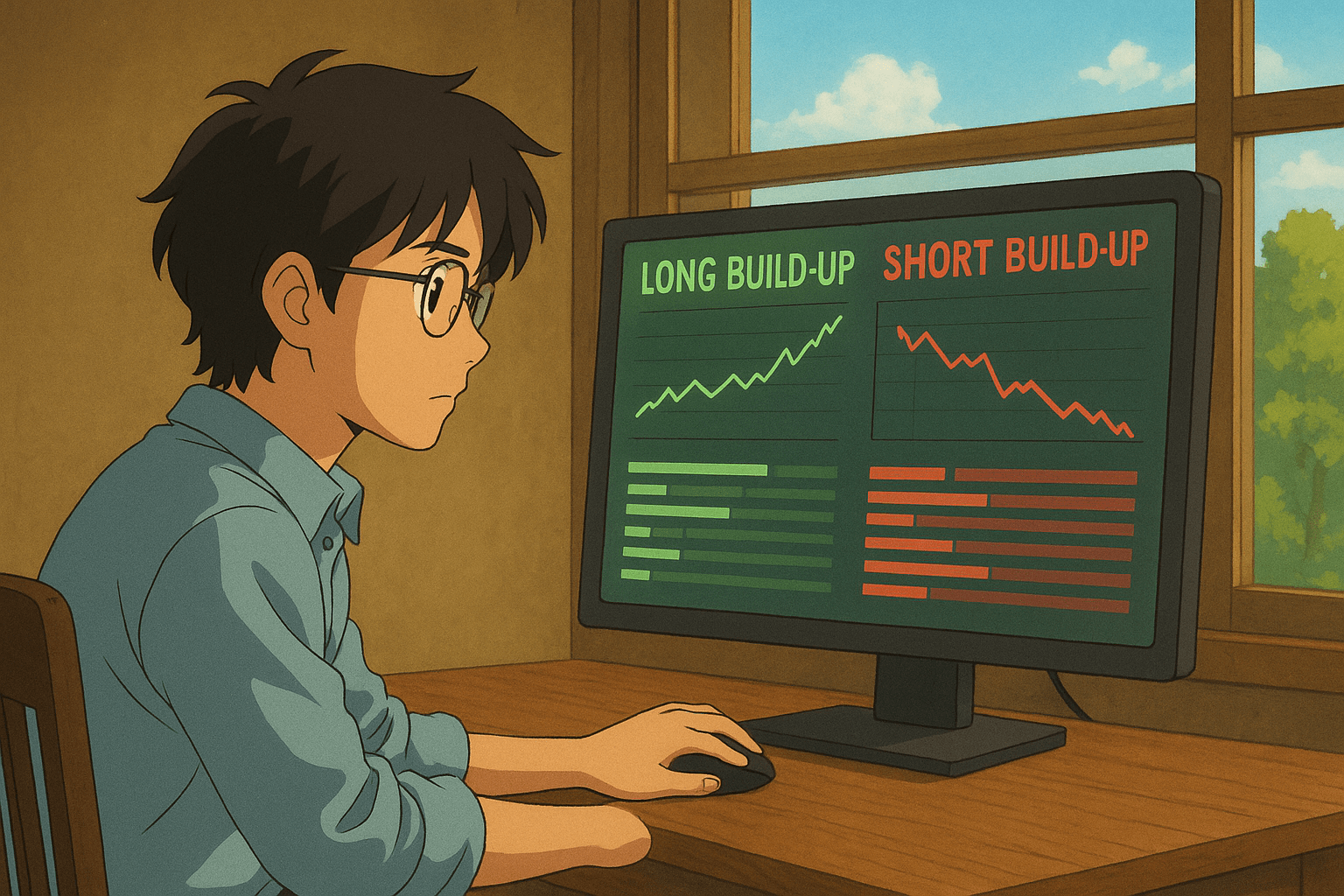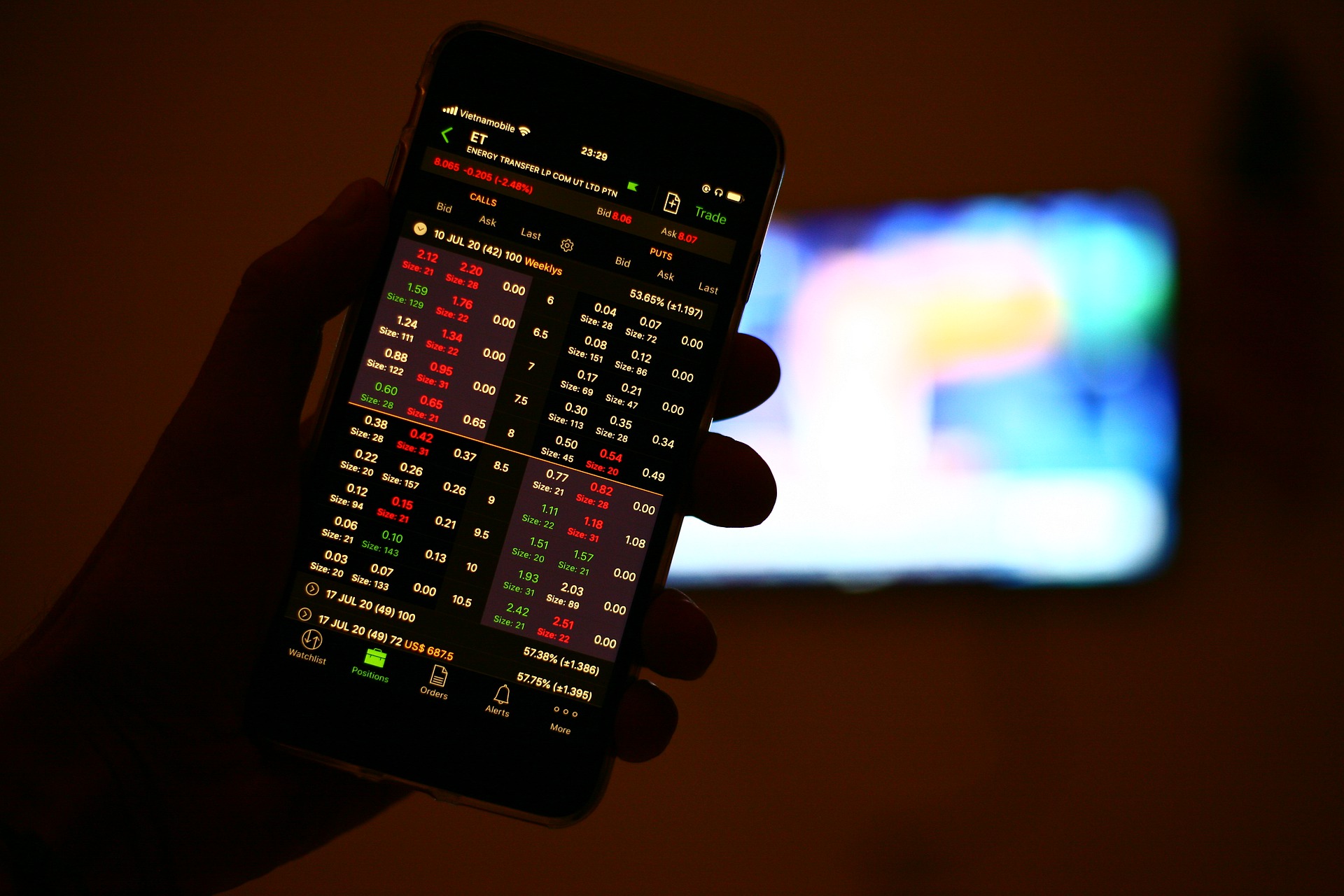If you’ve ever stared at the futures and options data and wondered, “Okay, price is moving… but is this move real or just a head-fake?” that’s exactly where you need to understand Long Build Up vs Short Build Up.
Let’s get into more details.
Traders don’t just look at price.
They also check Open Interest (OI), but what does open interest indicate?
Well, it tells them how many positions are still active in the market.
Combine the two, and suddenly the story becomes much clearer.
What Is a Long Build Up in Options Trading?
A Long Build-Up is when the price rises along with Open Interest.
In simple terms, new buyers are entering the market, and they’re not just passing through; they’re building positions.
Think of it like this: The stock is climbing the ladder, and instead of people cashing out, more folks are joining in, betting that the climb isn’t done yet.
Example:
Back in July 2023, Reliance futures shot up from around ₹2,400 to ₹2,480. At the same time, OI spiked.
That wasn’t just random buying; it was clear that fresh long positions were being added. And sure enough, the rally continued for the next few sessions.
So if,
Price increases, along with open interest, then market sentiments are bullish.
What Is a Short Build Up in Options Trading?
A Short Build-Up is the mirror opposite — price falls, but OI climbs.
This means, traders aren’t just selling to exit; they’re opening brand-new shorts because they think the fall has more legs.
Real-world example:
Infosys’s Q1 FY24 earnings are a classic case.
The stock dropped from ₹1,500 to ₹1,460, and instead of OI shrinking (which would’ve meant people were closing trades), OI went up.
That was a big hint that bears were adding shorts, expecting more downside. And that’s exactly what played out in the following week.
So if,
Price drops but open interest increases; this depicts the bearish sentiment of the market.
Why Long and Short Build-Ups Matter for Traders
This isn’t just theory, spotting build-ups early can help you:
- Catch Trends Before the Crowd → A long build-up often means the uptrend isn’t done. A short build-up signals more pain ahead.
- Avoid False Moves → Sometimes prices spike or drop without OI support. Those moves often fizzle out.
- Pick Better Trades → If you’re bullish, you’d rather see a long build-up than take a blind call. If bearish, a short build-up gives you confidence to hold that put.
Difference Between Long Build-Up & Short Build-Up
Here’s a quick reference you can screenshot or turn into an infographic:
| Scenario | Price Action | OI Action | Market Mood | Trader’s Takeaway |
| Long Build-Up | Price going up | OI increasing | Bullish strength | Consider longs/call options |
| Short Build-Up | Price going down | OI increasing | Bearish pressure | Consider shorts / put options |
Want to crack the secret behind OI buildups and unwinding? Enroll in the option trading mentorship program now and experience personalized learning.
To get more details about the mentorship program, book a counselling session now.
Conclusion
The market always leaves footprints. Price shows the direction, but OI reveals the conviction behind it.
So next time you’re scanning the futures and options data, don’t just ask, “Is the price moving?” Ask instead, “Are traders backing this move with fresh positions, or are they quietly heading for the exit?”
That one question could save you from chasing weak moves — and help you ride the strong ones with confidence.
Before investing capital, invest your time in learning Stock Market.
Fill in the basic details below and a callback will be arranged for more information:









